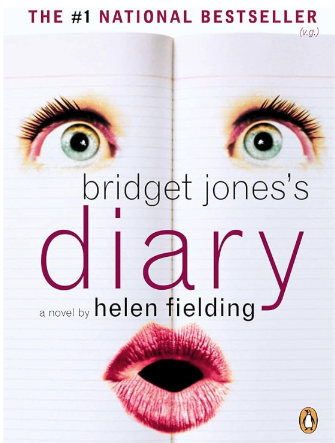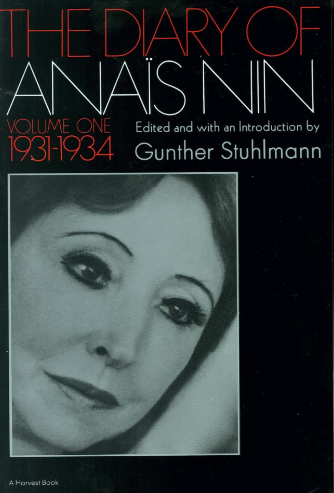Struggling with your memoir?
|
|
|
Are you telling your memoir from your point of view? You’re thinking, Of course I am! I’m telling it in the first-person! But you may be creating a distance from your reader without even realizing it. Let me explain through the example below. “Our car raced down the street at breakneck speeds, whizzing past all of the other vehicles and almost running over a pedestrian. This pace continued as we maneuvered down the highway until we finally ran out of gas twenty miles later.” If you’re not seeing the problem with this, keep reading. The text I just gave you has a certain distancing effect, what I call the drone effect. If there were a camera recording this version of events, the camera would be positioned far above the action, recording all of it in a wide shot. However, in a memoir, we need the narrator's point of view, which means “the camera” needs to be inside the car. Instead of getting a global understanding of what is happening, we need to see only what the narrator is witnessing.
See if you notice the difference between this rewritten version and the previous one: “How could I get Johan to slow down the car? He was angry. I got that, but did that mean putting both of our lives in danger? There were just inches separating us from the car in front of us. If that car slowed down by just ten miles, we’d plow into its backend. Johan swerved just in time. I wonder how long he planned to continue at this pace.” In the example with Johan, we are not getting a generic, distanced point of view. Rather, we're sitting in the passenger seat with the narrator getting her point of view on everything that happens. *** Let me give you one more example. Here is the generic, drone point of view: “The man slammed his fist into my face. He pounded into me over and over again until he was too tired to keep inflicting pain.” How would I rewrite this so that the camera is “on the narrator’s head” so to speak? “I felt a searing pain in my stomach. Suddenly, I realized I'd been hit. I barely had time to register the next fist coming toward me. I instinctively covered my head with my arms, but he was stronger than I was.” In the second version, instead of witnessing this moment from a distance, we are seeing it through the narrator’s eyes, which works to make this so much more compelling. *** A reader picks up a memoir because they want to live through your experiences fully. They don’t want a generic account of what happened. So don’t distance your reader by being an anonymous narrator. This is your story. Give us your point of view. Hope this helps you. As always, happy writing!
0 Comments
If you don’t understand structure, you’re not going to be able to write a good memoir. I can’t emphasize this enough. Structure in memoir is the way that you string your memories together so that you create a story. In fiction, this is called plot. Reading a novel or a memoir should feel very much the same – plot works in a similar way in both genres. However, arriving at plot in memoir is a very different process. In fiction, you just make it up. With a memoir, you’re relying on memory. The danger there is that disconnected memories are the opposite of plot.
Basically, what you want to do is connect your memories in some way. Creating structure means turning disconnected events into a story. Here’s an example to help you better understand how to do this. Let’s say you want to write about the following:
One way is to think of a concept that all four events might share. The first idea that comes to mind is “separation,” an idea that all four of these events have in common. Let me show you how I could take the concept of separation to help turn this into a story. I might start the chapter by introducing the concept of separation in my life. I've always felt separate from my family members. However, when I am 44 years old, tragedy brings us closer, at least when it comes to my sister. My sister calls to tell me she is getting a divorce. Then I would insert a scene of the phone call with my sister. By the way, we’re not actually writing out the entire chapter here. I’m just creating the summary version. Later I will write out the chapter in its entirely. I always suggest you figure out your structure before you get down to writing by the way! Back to the example… So now let’s come back to the idea of separation again to get us into the next scene. This is just one way you could do this: Over the next months, my sister and I have continuous phone calls. We speak in a way we haven’t since we were kids. The closeness makes me long for a relationship with my brother. So I invite myself over to his house. When I see my brother, I realize he's lost 80 pounds. All this time we’ve been distanced and here he has achieved a bigger separation, freeing himself from this weight that's held him down for most of his life. Are you kind of seeing where I’m going with this? I keep coming back to the idea of separation in a new way to connect what would otherwise be disconnected memories. Okay, let me finish off the chapter: In the midst of all of this, my dog goes missing. Suddenly, I'm separated from the companion who's been with me for eight years. In order to recover from this loss, I decide to escape to the Bahamas and take a break from my daily routine, a separation from my day-to-day existence. Take an idea and use it time and time again in your chapter to show your reader how disconnected events aren’t as unrelated as they first seemed. This is the key to turning memories into a story. Too many events recounted too quickly can quickly destroy your book. In this video Random House author Wendy Dale gives several examples to help you understand how this problem might play itself out in your manuscript. She also explains what it really means to "slow down your plot." Want to know what a reader actually remembers from your text? You'll get that info too. My students often come to me and say they have a really great memoir idea. My excitement builds until they say, “I'm going to structure it like a diary.” And suddenly, my enthusiasm fades. Some writers may believe it’s easier to write their memoir like a diary, but the problem with this is two-fold:
You might be thinking, “Well, why do some diary style books work?” The answer is that they don’t actually consist of disjointed, random events. Instead, one event brings about the next one. There’s this illusion of diary writing, but it’s really just traditional plot with breaks thrown in. For instance, in Bridget Jones’ Diary—is the narrator just recounting random events from her life? Not at all. Instead, there is a story, one about seeking Mister Right. Almost everything recounted in this novel is related to this search. The same is true of The Diary of Anais Nin, which is about Anais Nin’s relationship with Henry and June Miller. The problem I see in most memoirs written in diary format is that it really is a day-by-day account of what a person did. It’s just a bunch of random facts and events, which quickly causes any reader to become bored. If you do want to structure your memoir as a diary, you can make it work. I’d suggest writing it as a narrative first and only once you’ve created a fulfilling story for your reader, then would I suggest going back and breaking the story into diary entries.
Hope this helps you! As you work on your memoir this year, don’t make the mistake of letting your “in-between writing” ruin your structure. In between writing is remembering all the things that happened that aren’t necessarily relevant or interesting to the reader. It’s recounting a story exactly as you remember it. Let me give you an example. Let's say you're writing about a family vacation to Los Angeles. You have a scene at your mother-in-law’s house and a scene about getting accosted by Goofy at Disneyland.
The problem comes in when you write about everything happening between those events.
If you're not letting us live through an event with you, your reader doesn't want to hear about it. This is one of the most important things to keep in mind when it comes to writing your book. Anytime you mention something happening in your book, your reader wants to experience it with you in the form of a scene. *** Here is another example of the kind of writing that doesn’t work but which I often see in my students’ assignments: From Minneapolis, it was a four hour drive to Des Moines. Once we arrived in town we pulled into the first cheap hotel, we unpacked our clothes and went for cheeseburgers at a diner. After dinner, we filled up the car and bought snacks at a nearby gas station. We decided to go to a carwash as well. At the hotel, we had a restless night. In the morning, I was hungry, but we skipped breakfast because Jaime wanted to get on the road. We drove for three hours more when it started to rain. Finally, we made it to the border of South Dakota. In this example, the writer is recounting all the stuff she remembers, but it doesn’t need to be in the book. Instead, think about how your reader wants to live through moments with you through your scenes. In short, if you can’t turn it into a scene, just leave it out of your book. A huge problem I come across is people thinking that dialogue is crucial to their memoir. They often use dialogue to tell the story when narration would actually work so much better. In this video, I give several examples of scenes told through narration vs. scenes told through dialogue and let you decide which is a more effective way of getting your story across. I find that a lot of writers get stuck when it comes to the task of writing a scene. All of a sudden they start to question themselves: Where do I begin? Should I describe the interior of the stone cottage? Talk about the dank smell? Maybe start with a line of dialogue? I want to share several of the best ways I’ve discovered for starting out your scenes. Before I get to that, here are a few temptations to avoid:
1. Don’t describe the weather: There’s a reason that “It was a dark and stormy night” has become such a cliché: It’s because it’s not a very good starting sentence. In fact, talking about the weather is often a sign of a writer who doesn’t have anything else to say—much like those who talking about the weather in real life! Of course, there are some exceptions. If you are writing a book about Antarctica or the Bahamas, by all means, mention the weather. But if you bring up the weather, be prepared to really describe the weather. In other words, don’t mention the weather in passing as you go on to describe other things. If you bring up the weather, be prepared to talk about biting cold or blissful warmth or unending rain for at least a paragraph. Mentioning the weather in passing doesn’t add to a reader’s experience of your event. In fact, a reader usually glosses over the weather unless you take at least several sentences to truly make them experience it. 2. Excessive setting details: I have lots of writers who will take qualm with this tip. I’m not saying to never describe the place where your event is about to take place. What I am saying is not to use setting as a fallback because you have nothing else to write about. You don’t have to describe every place in detail in your book just as you don’t have to describe the look, smell and feel of every taxi your narrator gets into. Sometimes a person just gets into a cab. 3. Don’t name everyone in the room: Another trap I see a lot of writers fall into is to start out their scenes with a list of everyone who is present at the beginning of a scene. It’s Thanksgiving dinner and they tell us that they are at the table with their mom and dad, their sister Jenny, their brothers Bob and Jim, their sister-in-law Sara (the one who’s married to Bob), as well as Bob first wife Sally and his second wife Laura. Okay, I went on a little too long there for comedic effect. But I often see writers give long lists of names at the very beginning of their scenes. Instead, mention your characters one at a time as they become important to the scene. Now, let's go over important tips to start your scene: 1. Put us inside your head so we know how you feel. Let’s say your scene is about getting fired. One way to start out your scene is by letting us know how you felt right before that. You might have that first cup of coffee at your desk, thinking to yourself that it is going to be a great day. If it’s the day of your wedding, maybe you’re having doubts. You put on your dress wondering if you’re making the right decision. By putting us inside your head at the beginning of the scene, you also create suspense. Your reader already starts to suspect that something is about to change. 2. Summarize the main event. Every scene needs to contain an event, something that will happen at the end of the scene to give it a reason to exist. A great way of starting out your scene is to mention the main event in your very first sentence. Let’s say that the primary event in your scene is a car accident. If that’s the case, you can start out the scene by bringing up the accident. In other words, you might write something like, “The day I got into a car accident also happened to be Valentine’s Day.” Once you have summarized your main event (you could use anything from a sentence to a paragraph), then go back and start the story of the accident from the chronological beginning. “I was at the drive-in ordering breakfast wondering what James had planned for the day.” By telling them what the scene is going to be about, they’ll then have the patience to hear you out from the very beginning of your story. I hope that helps you better understand how to write your scenes without falling into clichés or overly describing the setting and characters. Happy writing! What are the most common mistakes writers make when it comes to their prose? In this video, Wendy Dale talks about traps that tend to "cheapen" your writing as well as how to avoid them. Anytime something that happens in your book, your reader wants to live through that event in the form of a scene. But what if you don’t remember? Your first instinct might be to just leave it out? Here’s why leaving it out might not always be the best option. Take this example. Let’s pretend you wrote this in your story:
That was the day Hakim and I broke up. Two days later, I was feeling better. And a week later, I went for an interview at a new job. *** Wait, you and Hakim broke up? Even if you don’t recall exactly what happened, writing it this way makes your reader feel left out because it was mentioned in passing. It also feels like your story is moving too quickly. Anytime something happens in your book, you need to include a scene. Your scenes allow a reader to be transported, allowing them to become part of the story and forget they're reading a book. But back to the question—what if you don’t remember? The solution is simple, but most people miss out on this because they’re thinking of their scenes in the wrong way. They feel the need to include everything that happened. You don’t need to do this. Instead, the way to “remember” is to cut straight to the main event that gives your scene a reason to exist in the first place. Going back to the example about being broken up with, let’s say it took place at a party. You don’t need to include that you drank too much, ate the worst pizza of your life, overheard two women talking about you, or ran into an old friend from high school. Here’s how to rewrite this and cut straight to the main event. It was at Jessica's party that Hakim decided to break up with me. One minute I was sipping on a margarita. The next I was staring at Hakim dumbfounded, trying to take in what he had just said. I repeated his words back to him, “You're moving to Mauritania? And you don't want a long-distance relationship?” Apparently, along with his new job, he was starting a new life, one that would not include me. *** This wasn’t a long scene. It only took six sentences to have you live through the moment with the narrator. Here’s one more example. My mother came to visit and we got into a huge fight over Soren’s education. Later that week, she called and we reconciled. *** Again, this example isn’t letting the reader live through the story with the narrator. If you don’t recall the details of this moment, go to the main event and create the scene: I had hoped for a peaceful visit with my mother. However, it only took two hours for us to begin fighting. I made the mistake of bragging about Jenna's straight A's which gave my mother the chance to bring up Soren’s education. We hadn't thought much about nursery school. Jim was busy with his new job and I'd been working on a new oil painting of a baby kangaroo trapped in its pouch, which some might have seen as a metaphor for a daughter's relationship with her mother. But my mom was adamant that we start on the application for Norton Preschool as soon as possible before the enrollment period closed. All of her friends had kids who had been there and apparently those kids were now grown up somebodies. From her point of view, it was either Norton Preschool's guaranteed future or life on the streets fishing dinner out of grocery store dumpsters. *** Notice there is no dialogue or description of the furniture in the living room and what anyone is wearing. Instead, there’s plenty of subjective writing, which puts the reader in the narrator’s head and makes the scene more interesting and relevant. To recap, remember these three rules: 1. Anytime you mention an event in your book, include a scene. 2. Scenes are where readers are transported and live through an event with the narrator. 3. Scenes don't have to be long. Sometimes it's better to jump right to the event instead of having a long setup that recounts every little detail. I hope this makes your good writing even better. Happy scene writing! Are you using flashbacks in the wrong way in your book? I see so many writers try to incorporate flashbacks the same way they are used in the movies—as a person remembering a time from their past. However, flashbacks in memoir don’t work this way. Flashbacks are not memories. A flashback is a story from your past that is relevant to the main storyline. In other words, your narrator is not remembering this time. Instead, you are jumping to a previous time period briefly because you have an anecdote from the past that is relevant to the scene you were already in. The most important thing to remember about flashbacks is that they exist to make a point. The flashback makes the same point that you are making in the scene in your main storyline. If you don’t make this point, it will get your structure off track and your reader will wonder why you’re including the flashback in the first place.
Here are two things you need to get into a flashback: 1. Something has to happen in your main storyline. 2. Make a point that is relevant to the flashback and related to what just happened. Does that sound confusing? It won't by the time I'm finished giving you the examples. Here is an example from “Somebody's Daughter,” by Ashley C. Ford. "I rested my forehead against the bus window, careful to avoid the red bar warning that this was an emergency exit. One time on a bus ride before this one, my grandmother told me that if I fell asleep against the bar, I might slip out of the window and into the road before anyone would notice I was gone." **** Let's look at how she gets into the flashback using the two rules I outlined above. This is what happens in her main storyline before she gets into the flashback. “I rested my forehead against the bus window, careful to avoid the red bar warning that this was an emergency exit.” This is the point that relates what just happened to the main storyline: “One time on a bus ride before this one my grandmother told me that if I fell asleep against the bar, I might slip out of the window and into the road before anyone would notice I was gone.” Here is the rest of the flashback: "As she said it, I could see it—my small sleeping body tumbling from the side of the bus falling into traffic, smashed into the road, and all the bus patrons, driver included, continuing toward the Hoosier State, with no sense that a little girl who had just been real and alive beside them, was now dead and gone behind them. I taught myself to sleep lightly, to feel the difference between the window and the bar on my face. As I tried to sleep, now the light vibration of driving down the highway soothing me, I dream of the tea set I'd left behind, and the farm where I could be anything and anywhere I wanted with a little imagination." *** This is another sample from “Where You End And I Begin,” by Leah McLaren. As you read it, think about something happening in your main storyline and then make a point to get us into the flashback. Let me set up the scene just a little bit for you. Leah’s hamster Adrian was just found by her dog in the snow. The sample starts with her mother speaking. “Oh, Leah, I don't think he's going to make it. The best thing to do would be to put him out of his misery.” This is what happens in the main storyline—her mother suggests putting the hamster out of its misery. “What? No!” “Maybe you should call your father.” I'd once watched my dad place an injured sparrow behind the tire of a Celica in reverse. He was gentle with animals, but he'd worked weekends at a funeral home in high school and wasn't squeamish about death. He said it was cruel to let an animal suffer. Adrian was suffering. I could see that. “There must be something we can do.” My mind raced. The highlighted text is the point that the author makes to get us into the flashback because it’s related to what is happening in her main storyline. *** Here is the final example from “Wild,” by Cheryl Strayed. While reading it, see if you can pick out how Strayed gets into the flashback with a point, and what the event is. The doctor shook his head and sadly pressed on. He had a job to do. They could try to ease the pain in her back with radiation he offered. Radiation might reduce the size of the tumors that were growing along the entire length of her spine. I did not cry. I only breathed. Horribly. Intentionally. And then forgot to breathe. I fainted once—furious, age three holding my breath because he didn't want to get out of the bathtub, too young to remember it myself. What did you do? What did you do? I'd asked my mother all through my childhood, making her tell me the story again and again, amazed and delighted by my own impetuous will. She’d held out her hands and watched me turn blue, my mother had always told me. She waited me out until my hands fell into her palms and I took a breath and came back to life. Breathe. “Can I ride my horse?” my mother asked the real doctor. She sat with her hands folded tightly together and her ankles hooked one to the other. *** What happens in the main storyline? I did not cry. I only breathed. Horribly. Intentionally. And then forgot to breathe. What is the point that got us into the flashback? “I fainted once—furious, age three holding my breath because he didn't want to get out of the bathtub.” Strayed’s point is related to that event that is going to set up the flashback. This is what gives her flashback a reason to exist. Here’s a quick tip—make a point at the very beginning of your flashback. Doing it this way will make the flashbacks relevant in your readers’ mind, and they won't ask, “Why is the author telling me this?” Wishing you successful flashback writing! And remember this: Flashbacks are not what your narrator remembers. |
AuthorA Random House author offers tips on writing your own memoir. Archives
April 2024
Categories |
|
|
Memoir Writing for Geniuses.
All rights reserved. |










 RSS Feed
RSS Feed